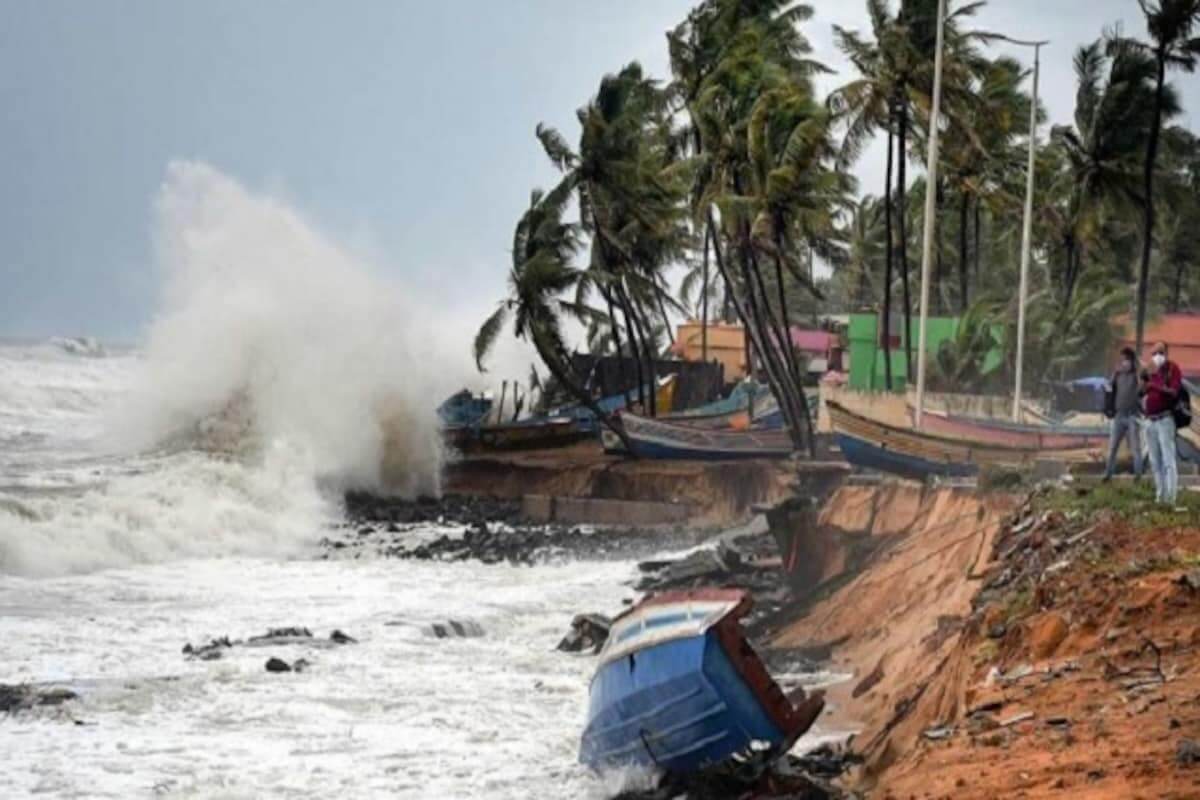Cyclone Tauktae made landfall on the coast of Gujarat on Monday at around 8.30 PM, causing wind speeds ranging from 155 to 165 kilometres per hour. While it was initially classified as an “extremely severe” cyclone, it eventually weakened and was downgraded to a “very severe” cyclone as the eye crossed the coast and shifted inwards. As it moves further, the India Meteorological Department said on Tuesday that it will deteriorate into a “deep depression” by the end of the day.
The storm has caused severe disruptions across the regions bordering the Arabian Sea in the states on the western coast of India. Earlier on Monday, as it passed Maharashtra, Mumbai experienced heavy rains and strong winds, reaching the highest-ever speed of 114 kilometres per hour. It resulted in the closure of several airports, waterlogging, and the felling of trees. The typhoon has killed at least six people in Maharashtra and injured several others. While passing Karnataka, Goa, and Kerala, it resulted in eight deaths.
In preparation for the cyclone, state authorities in Kerala, Karnataka, Tamil Nadu, Maharashtra, Gujarat, and Daman and Diu conducted large-scale evacuations over the past three days with the help of over 50 teams of the National Disaster Response Force. Indian Home Minister Amit Shah also convened a meeting with the officials from the states on Sunday to check their preparedness for the cyclone, specifically highlighting the importance of ensuring no disruption in COVID-19-related healthcare. In addition, he discussed the possibility of the interruption of oxygen production in Gujarat and Maharashtra and directed the authorities to ensure a stock of two days in case of any obstructions in transportation channels.
On the same day, Indian Prime Minister Narendra Modi also conducted a review of the states’ agencies and their response forces. The Indian Air Force and Navy were also asked to stay on standby with their aircraft, helicopters, and diving teams, ready to offer “full support to state administrations.”
Cyclone Tauktae is said to be the worst cyclone to have hit Mumbai in at least four decades and the third-worst cyclone to have struck the coast of Gujarat. According to Akshay Deoras, an independent meteorologist, it is classified as a “Category 4” tropical cyclone.
It is now expected to move into Rajasthan, causing heavy winds and rainfalls in several cities including Jaipur, Ajmer, Udaipur, and Jodhpur. Moreover, with the Rajasthani healthcare facilities heavily relying on receiving its oxygen supplies from the Hazira port and Jamnagar refinery in Gujarat, there have been extensive arrangements made to ensure their safe transportation. In this regard, authorities have deployed 1,500 individuals from the police forces and the State Disaster Relief Force along the oxygen corridor between Gujarat and Rajasthan.
Udaya Regmi, the South Asian head of the International Federation of Red Cross and Red Crescent has said that the cyclone is a “terrible double blow” to the affected states, as they continue to fight the ongoing second wave of the COVID-19 pandemic. Apart from the disruption to oxygen supplies, it has also caused a two-day halt in vaccination drives in Maharashtra and Gujarat.
Cyclone Tauktae: All You Need To Know
Several Indian states on the western coast, along the Arabian Sea, are witnessing heavy rains as Cyclone Tauktae, the worst cyclone in the region for the past 40 years, makes landfall.
May 18, 2021

SOURCE: PTI
